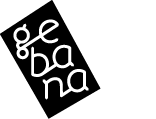Making agriculture digital
At the beginning of 2019 we tried something new in Togo: With an app, we wanted to improve and above all simplify the flow of information between family farmers and gebana. Michael Stamm, member of our development team, talks about the experiment and how we will continue.

Michael Stamm, gebana Development Team, in Togo.
Earlier this year you started testing the app Smartfarm in Togo. With the app, you want to collect data like the name and age of the farmers, the risk of pesticide contamination and the harvest quantities. How did the test go?
Michael Stamm: At the beginning, everything was a bit bumpy. The mobile network in Togo is still relatively unreliable, especially in rural areas, you can hardly send text messages. The app is allowing the user to work offline on the field and doing synchronisation when user have access to a good connection. However even with a proper connection we had problems with data synchronization. So, the app developer helped us to disable some functions of the app that were useless to us. For example, attaching pictures to the farmer profile. This made the synchronization more reliable.
Agent training was also really difficult. We distributed android phones to each of our agents and had to give them proper trainings. Despite various trainings, an important follow up had to be done from the office to make sure the users are fulfilling the correct data. Since July, we’re no longer testing and the app is officially in use.
What do you use the collected data for?
If you want organic certification, you have to disclose how you work. We need to know the farmer’s name, his age, how long he has been working with us, what he grows, what quantities he can deliver and whether he uses pesticides. In the past, we have already collected this kind data. But it was much more complicated
Why is that?
Back in the day, our consultants went to the farmers in the field and asked them all these questions. They recorded their answers on paper. With their paper documents, they went back to the office and then transferred everything into an Excel document and later into our database. This may work if you have a few farmers. With more than 5000 farmers, however, this is anything but efficient.

Screenshot Smartfarm
What do the farmers say about the app?
Basically, the farmers don’t care because nothing has changed for them. They already had to provide us with this kind of information. Anyhow, some are a bit unhappy, because through area audit we can create a very accurate picture of their cultivated areas. But that means that they have to walk the whole area with us. That used to be easier for them: When we asked them how much land they work, they could just say "half a hectare" and the job was done. Now it’s a bit more effort, but result is much more precise.
What are your next steps?
We have already visited about 3000 farmers and recorded their data. That means there 2000 more to go. I myself have to train the managers and consultants here in Togo, so they all know how to work with the app. Only then we will be able to build an accurate database. After the first step where we entered all data necessary for organic inspections, we now enter all the data from purchase activities such as volumes bought per farmer, cash transfer and pre-financing.
How will this database change your work?
Our flow of information will be much faster. And for that reason, we can be more sustainable, more transparent and more profitable. We will certainly use less paper than before.
Do you think we could transfer the approach you took in Togo to other countries?
The system is very easy to adapt and we are already trying that in Burkina Faso. If things go well there, it's possible everywhere. The key elements are a stable connection and a motivated staff.
How is this project financed? The app comes from a third-party provider who certainly charges fees for its use.
Cropin, the developer of Smartfarm, charges an implementation fee. In addition, there is an annual user fee per user. We can allocate part of the costs to projects in which we cooperate with organizations like the Deutsche Entwicklungs- und Investitionsgesellschaft or SECO. Ultimately, we are prepared to pay for everything ourselves.

 Login
Login

